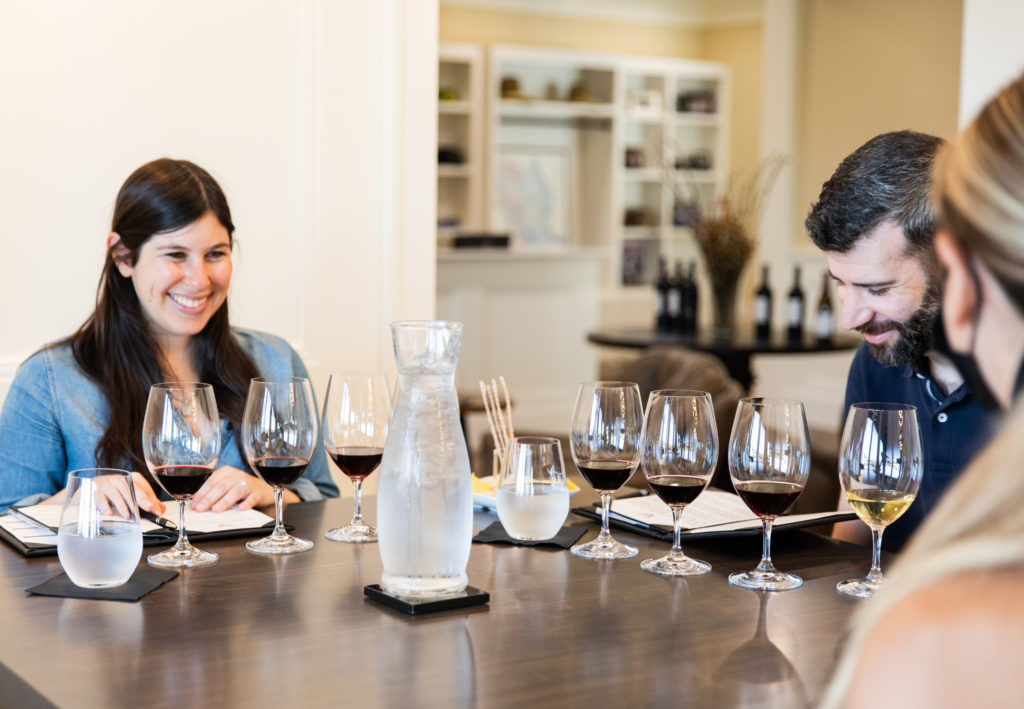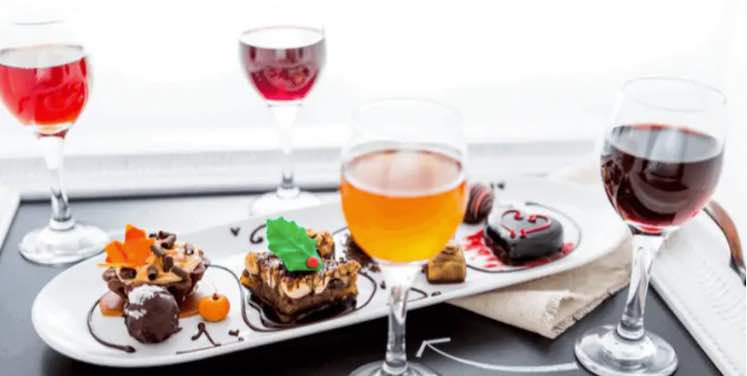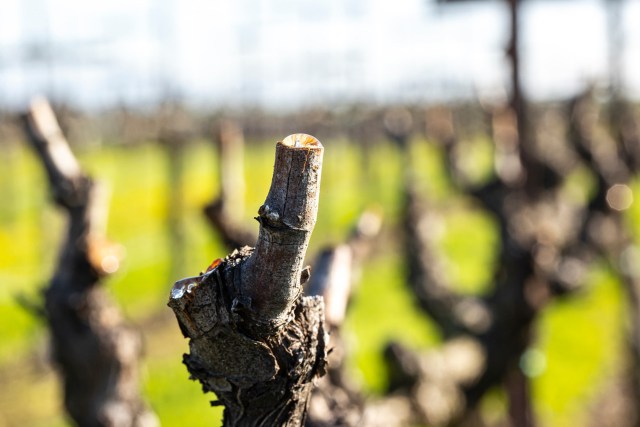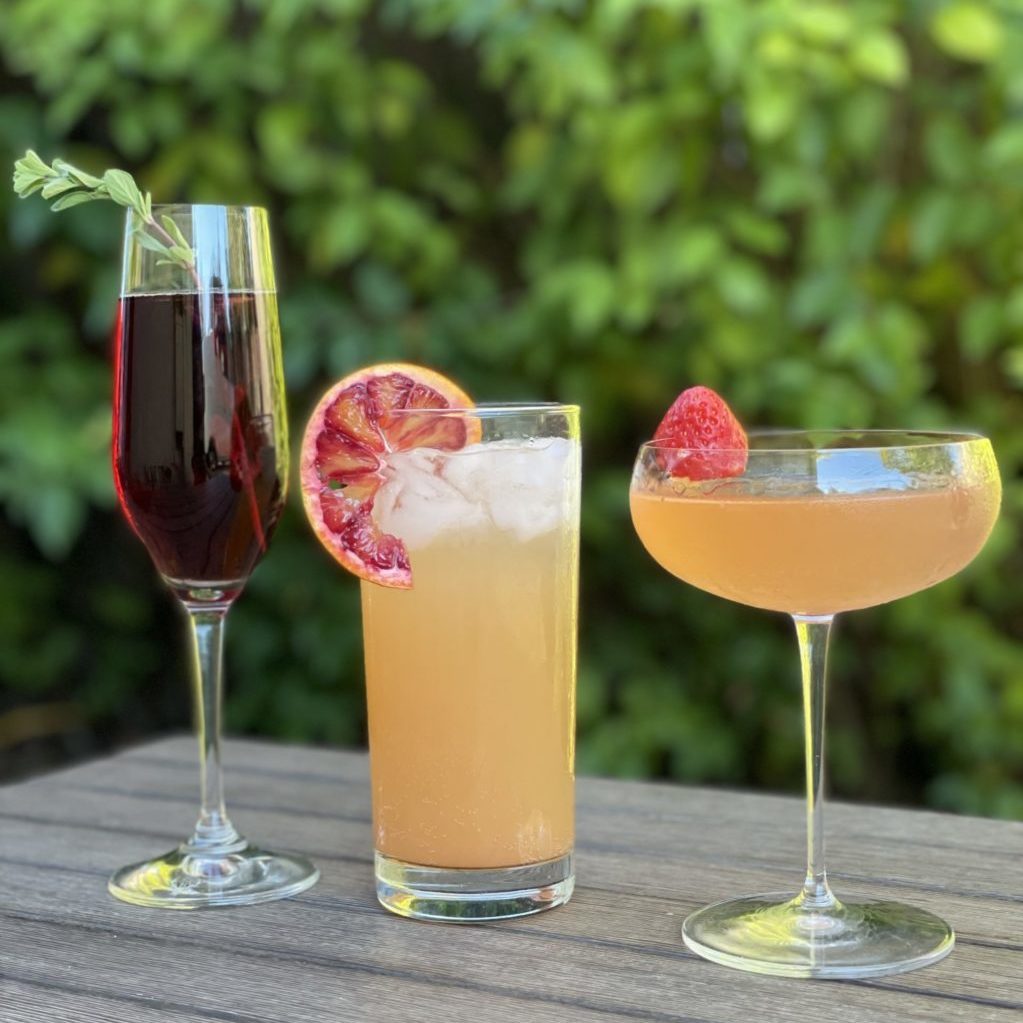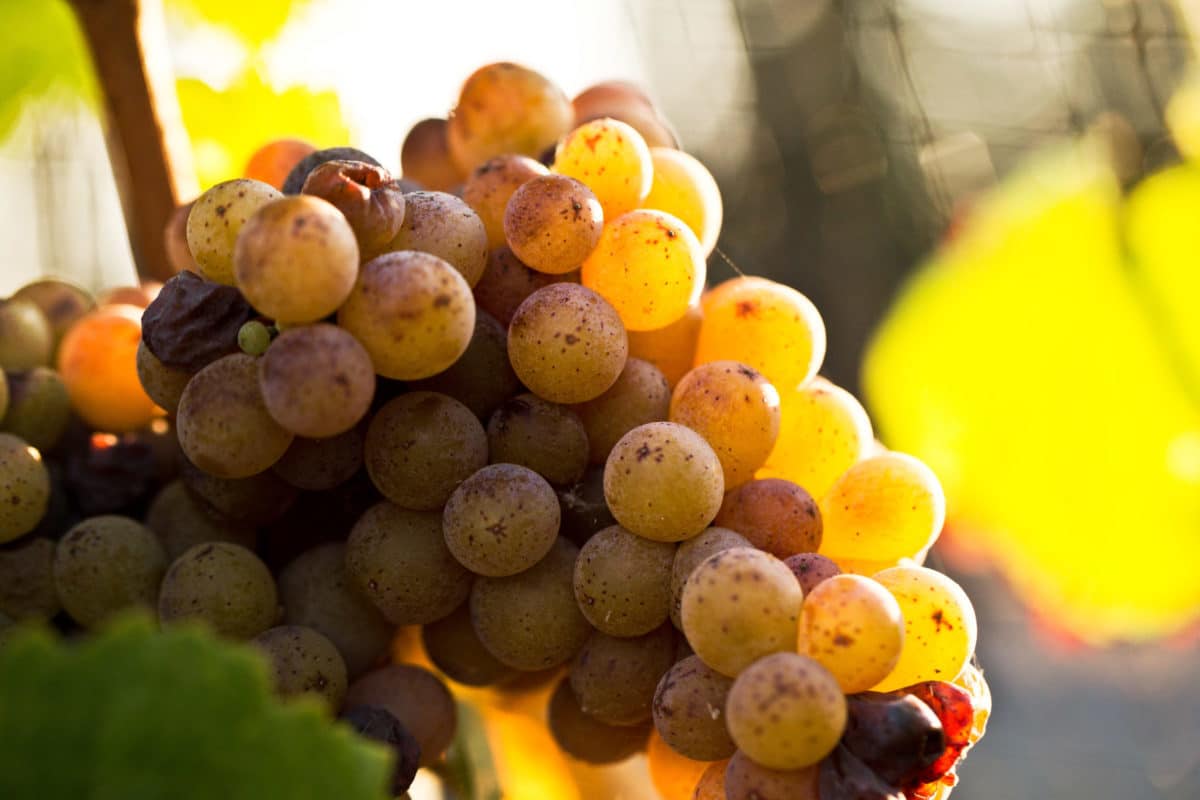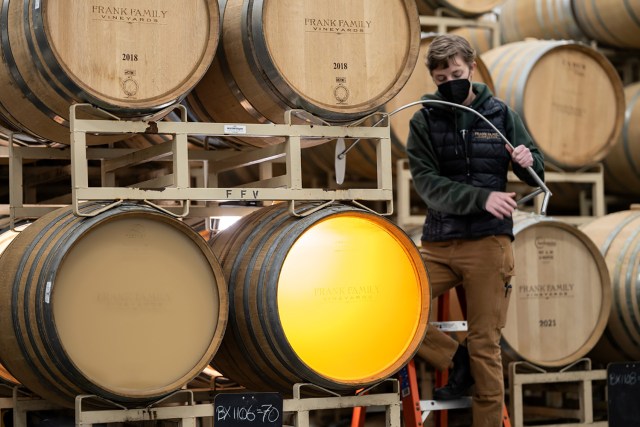The Step-by-Step Guide to Understand Your Palate and Taste Like a Pro
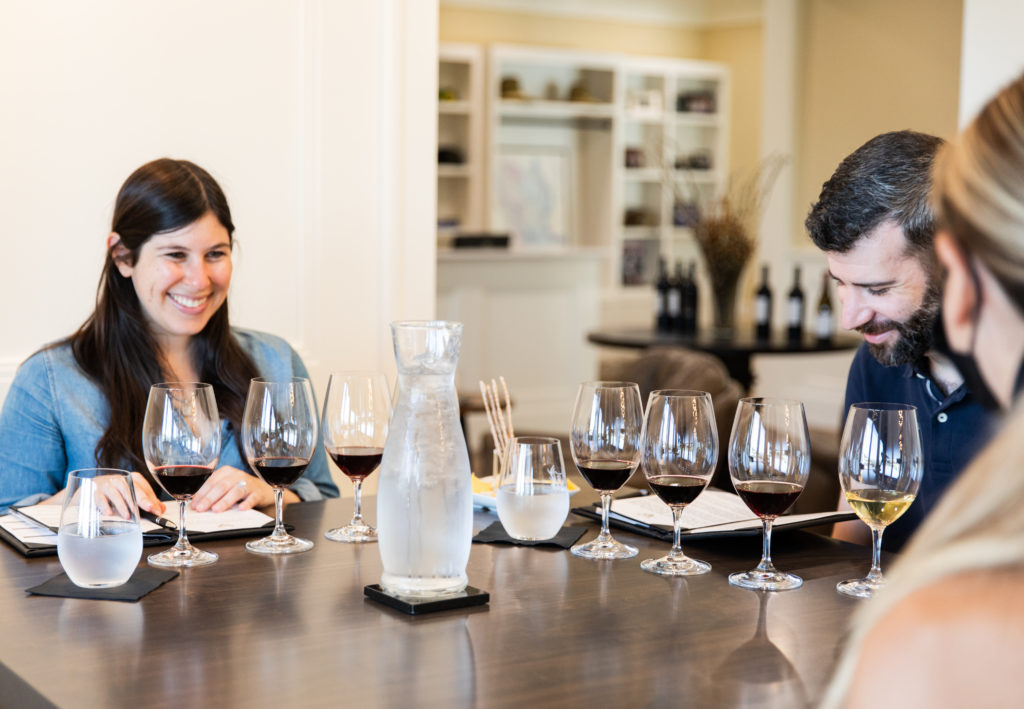
“I know what I like, I just don’t know how to describe it.”
Does this sound familiar? If so, you’re not alone. You know your own wine preferences, but it seems like every time you step into a tasting room, you’re bombarded with wine descriptions and tasting notes that seem completely foreign. Tobacco? Leather? Green bell pepper? Isn’t wine made from grapes?
When it comes to wine, wine professionals often use analogies as well as a lexicon that can seem foreign at first. Raise your hand if you’ve never tried a gooseberry or blackcurrant, smelled acacia flowers, or tasted wet stones (seriously).
While it’s absolutely possible to enjoy wine without having a dictionary of tasting descriptors memorized or blind tasting skills that would put a sommelier to shame, there are also tasting strategies and tactics that can help to increase your overall enjoyment of wine.
The good news is, by learning some common descriptors and tasting terms, through a bit of education, you will increase your enjoyment of wine as well as improve the likelihood of finding more wines that you love. And who doesn’t want that?!
In this series, we’ll cover some simple steps you can follow as a guide during your next wine tasting adventure or the next time you pop open a bottle. Specifically, we’ll explore the 4 S’s of Tasting: Sight, Smell, Swirl, Sip.
First up, Sight! Read on to discover what a wine’s appearance can tell you – it’s probably more than you think! And make sure to stay tuned for the next posts on Swirling, Smelling, and Sipping, where we’ll learn all about where aromas in wine come from and how to describe them.
So for now get comfortable, grab a glass, and let’s get tasting!
EVALUATING THE APPEARANCE OF WINE
Don’t judge a book by its cover, right? Well, despite appearance only being one small aspect of a wine, we still think it’s an important first step. Evaluating the appearance of a wine can give you a lot of information about what you are about to drink and it only takes a minute or two!
Start by holding the glass by the stem and tilting it at a 45-degree angle, ideally over a white background.
As you look at the wine, ask yourself the following questions:
What is the color of the wine?
To understand color in wine, let’s take a quick step back to look at where color in wine comes from in the first place. Why are red wines red, and white wines white? While this may seem basic – white wines are made from white grapes, and red wines from red grapes – the answer actually lies in the winemaking process. For white wines, the grape skins are separated from the juice by pressing prior to the fermentation process. For red wines, the (red) grape skins remain in contact with the juice during fermentation, during which time color, flavor, and other compounds are extracted from the skins.
You might be wondering, so what happens if you keep white wine grapes in contact with the skins during fermentation? Orange wine! Orange wine, which has nothing to do with the citrus fruit, is so-called because the white grape skins give an orange hue to the wine, along with unique flavors and texture.
And is it possible to make a white wine from red wine grapes? Absolutely! Though not very common, we’ve seen white Pinot Noir and even white Cabernet Sauvignon, among others.
What to look for
For white wines, the color can range from straw to yellow to gold. For red wines, the color can range from purple to ruby/red to garnet.
What it means
What does color in wine tell us? Color can provide clues as to the grape variety. For example, some white grapes such as Gewürztraminer have pink skins, which can produce wines with more of a golden color when some of this color pigment is transferred to the juice during pressing. Some red grapes, such as Sangiovese used in Chianti, have a more garnet hue, while Syrah has more purple tones.
Additionally, color can indicate certain winemaking techniques, such as aging in barrel, which will give white wines more of a yellow or gold color and can give red wines more of a red or garnet color.
Color can also be related to the age of the wine. With age, wines are slowly exposed to oxygen over time. For white wines, this results in a color more towards the gold end of the spectrum, and for red wines this leads to a more garnet-colored wine.
What is the concentration of color in the wine?
In other words, how clearly can you see through the wine?
What to look for
We use the scale of pale, medium, or deep. If you can read text through the wine easily, the concentration is pale. If you can’t see anything through the wine at all, the concentration is deep.
What it means
For white wines, age and other exposure to oxygen, such as barrel use, will increase the concentration of color. Concentration can also be affected by the pigment of the grape skins, similar to what we discussed above in the context of color.
In contrast to white wines, exposure to oxygen over time decreases the color concentration of red wines. For red wines, the color concentration can also be influenced by several different factors.
Grape variety: The difference in skin pigments of different grape varieties plays a major role in the color concentration differences we see in red wines, much more so than white wines. Compare a glass of Pinot Noir to a glass of Cabernet Sauvignon. Pinot Noir, a thin-skinned, low-pigment red grape variety, produces wines with a pale to medium concentration of color. On the other hand, Cabernet Sauvignon, with its thicker, more pigmented skins, yields wines that are deep in concentration.
Winemaking: High-extraction winemaking causes a deeper color concentration. What is extraction in winemaking? Remember back to the earlier discussion regarding red wines and skin contact during fermentation? Certain winemaking techniques, such as more frequent pumping over and punching down, can boost the extraction of color and other compounds from the skins by increasing the time the skins are in contact with the juice. Higher fermentation temperatures can also achieve this effect.
Are there any bubbles or gas in the wine?
What to look for
If the wine is sparkling, the bubbles will be immediately apparent. However, even some still wines, usually white wines, might have slight evidence of gas in the glass.
What it means
This can indicate that the wine was bottled under screwcap instead of traditional cork or could be intentional on the part of the winemaker to increase the brightness and freshness of the wine.
What is the clarity of the wine?
What to look for
Clarity refers to the amount of solids in the wine, or lack thereof. Clarity can be affected by winemaking methods, lack of filtering, and age of the wine.
What it means
For white wines, a good example is the tiny crystals you may have seen before in a glass of white wine. Sometimes referred to as “wine diamonds”, these solids are a crystallized form of tartaric acid and are completely natural and harmless, but many winemakers choose to remove them before bottling for aesthetic and textural reasons.
For red wines, sediment can be found in both young and older wines. In young wines, sediment is likely due to a lack of filtration of the wine. Believe it or not, this can actually be a very positive thing! Many winemakers choose not to filter their wines, because while filtering can remove the solid particles in wine, it can also remove some of the beneficial components that add to the overall complexity of the wine. As red wines age, tannins and color pigments precipitate out of the wine over time, creating sediment in the bottle.
What is the level of tearing and staining in the glass?
What to look for
The tears (or legs) of the wine refer to the way the wine falls down the inside of your glass after swirling or sipping. If the tears are colored against the glass, this is referred to as “staining”.
What it means
A common myth is that the tears indicate the sweetness, or even the quality, of the wine. Not true! In fact, the tears are only an indicator of the level of alcohol in the wine, with thicker, slower-moving tears suggesting higher alcohol.
Staining can indicate that the grapes were grown in a warm climate, that high-extraction winemaking techniques were used, that the wine is made from a highly pigmented grape variety, or all of the above.
You probably never guessed you could learn so much just by looking at a wine! And we bet you’ll never look at a glass quite the same way again. Is there anything that surprised you? Anything that you want to learn more about? Let us know!
And remember to stay tuned for the next post in the series, “Swirl and Smell”, where we’ll dive into the good, the bad, and the ugly (but mostly good) aromas found in wine.

